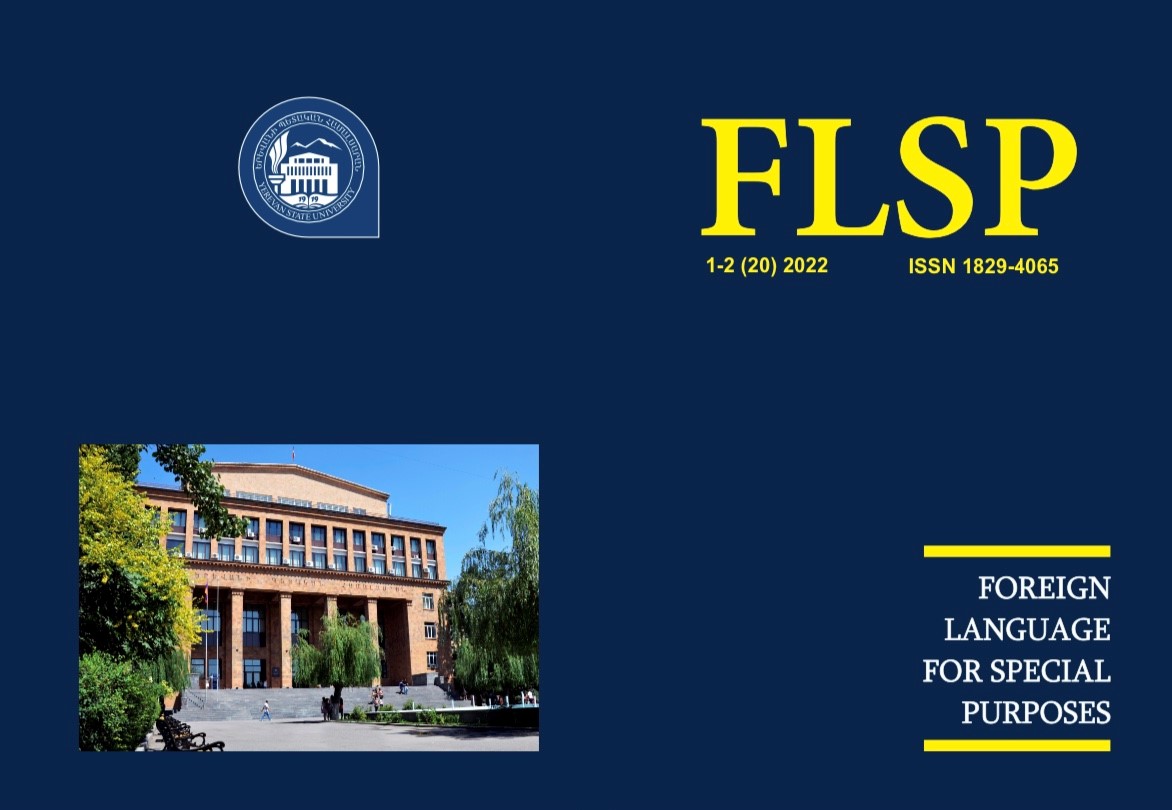DISCOURSE APPROACH TO TEACHING LANGUAGE AND COMMUNICATION SKILLS
DOI:
https://doi.org/10.46991/flsp.v20i1-2.9013Keywords:
Discourse analysis, language and communicative competence, speech act, conversation analysis, real-life conversationAbstract
Performing successful speech acts is a fairly complex phenomenon, which involves sociocultural knowledge about when to perform a speech act and which one is appropriate in a given circumstance. In courses teaching foreign languages there has frequently been an overly simplistic tendency to equate speech acts with certain linguistic formulae. A number of scholars have emphasized the importance of using findings of studies on the performance of speech acts in real-life conversations for teaching language and communicative competence. Discourse analysis can provide valuable insights for effective language teaching in many areas, including grammar, vocabulary, communication strategies, cross-cultural communication, sociolinguistics and other.
References
Burns, A., Joyce, H. (1997) Focus on Speaking. Sydney: Macquarie University.
Carter, R.A. (1998) Orders of Reality. //CANCODE, communication, and culture. ELT Journal 52 (1), Oxford : Oxford UP.
Cohen, A.D. (1996) Developing the Ability to Perform Speech Acts. // Studies in Second Language Acquisition 18 (2), Cambridge: Cambridge UP.
Cook, G. (1989) Discourse. Oxford: Oxford University Press.
Dornyei, Z., Thurrell, S. (1994) Teaching Conversational Skills Intensively: Course Content and Rationale. // ELT Journal 48 (1), Oxford : Oxford UP.
Hymes, D. H. (ed.) (1964) Language in Culture and Society: A Reader in Linguistics and Anthropology. New York: Harper & Row.
Hymes, D. H. (1989) Ways of Speaking. // Explorations in the Ethnography of Speaking. 2nd edn. /Ed. by R. Bauman and J. Sherzer, Cambridge: Cambridge University Press.
Koester, A. (2000) Getting Things Done and Getting along in the Office. // Dialogue Analysis VII: Working with Dialogue: Selected papers from the 7th IADA Conference /Ed. by Coulthard, M., Cotterill, J., Rock, F., Tubingen: Max Niemeyer Verlag GmbH.
Levinson, S.C. (1983) Pragmatics. Cambridge: Cambridge University Press.
McCarthy, M.J. (1998) Spoken Language and Applied Linguistics. Cambridge: Cambridge University Press.
McCarthy, M.J., Carter, R.A. (1994) Language as Discourse: Perspectives for Language Teaching. London: Longman.
McCarthy, M.J., Carter, R.A. (1995) Spoken Grammar: What Is It and How Can We Teach It? ELT Journal 49 (3), Oxford : Oxford UP.
Pearson, E. (1986) Agreement/Disagreement: an example of results of discourse analysis applied to the oral English classroom. //International Review of Applied Linguistics 74, Publisher: De Gruyter Mouton.
Sacks, H. (1987) On the Preferences for Agreement and Contiguity in Sequences in Conversation. // Talk and Social Organisation (pp. 54 – 69) /Ed. by G. Button & J. R. Lee, Clevedon, UK: Multilingual Matters.
Schegloff, E. (1984) On Some Questions and Ambiguities in Conversation. // Structures of Social Action: Studies in Conversation Analysis /Ed. by Atkinson, J.M., Heritage, J., Cambridge: Cambridge University Press.
Schegloff, E. (1988) Presequences and Indirection: Applying Speech Act Theory to Ordinary Conversation. // Journal of Pragmatics 12, Publisher: Elsevier.
Scotton, C.M., Bernsten, J. (1988) Natural Conversations as a Model for Textbook Dialogue. // Applied Linguistics 9 (4), Oxford : Oxford UP.
Teichmann, H.D., Kiefer, P. (1998) The European Language Certificates: Certificate in English. Learning Objectives and Test Format. Frankfurt am Main: WBT Weiterbildungs-Testsysteme GmbH.
Thomas, J. (1984) Cross-cultural Discourse as ‘Unequal Encounter’: Towards a Pragmatic Analysis. // Applied Linguistics 5 (3), Oxford : Oxford UP.
Downloads
Published
Issue
Section
License
Copyright (c) 2022 Foreign Languages for Special Purposes

This work is licensed under a Creative Commons Attribution-NonCommercial 4.0 International License.
Creative Commons Attribution-Non-Commercial (CC BY-NC). CC BY-NC allows users to copy and distribute the article, provided this is not done for commercial purposes. The users may adapt – remix, transform, and build upon the material giving appropriate credit, providing a link to the license. The full details of the license are available at https://creativecommons.org/licenses/by-nc/4.0/

